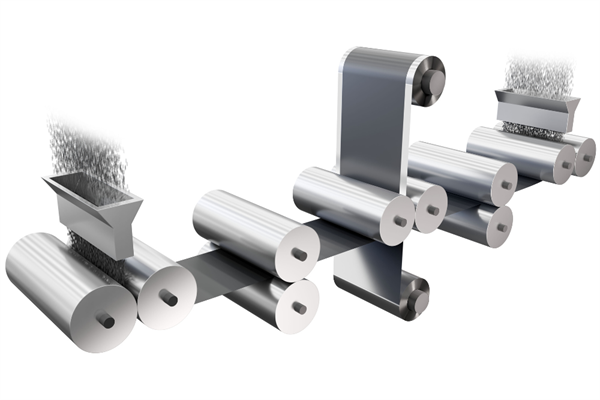
The newly-developed X.Cellify DC from Dürr enables dry coating with free-standing film.
The multinational engineering company Dürr
has unveiled X.Cellify DC, a new dry coating technology for battery electrodes, which creates a free-standing film of active material that is fully recyclable until laminated onto the collector foil.
This approach drastically reduces active material waste. The proof of concept demonstrates that the process is reliable and scalable, paving the way for gigawatt-scale pilot projects – initially for lithium-ion batteries and, in future, for solid-state batteries.
Until now, electrode production has relied almost exclusively on wet coating, where cathode and anode materials are applied as a solution to metal foils and dried in energy-intensive processes. Dürr’s new technology, developed with partners, eliminates the need for solvents and drying ovens by producing electrodes from a dry powder mixture. The dry battery material is pressed into a film using the Activated Dry Electrode® process by development partner LiCAP Technologies. The X.Cellify DC system covers all stages of production – from dosing, film formation and densification to lamination onto the collector foil.
“The successful proof of concept is a major step forward for us. We have demonstrated that the new kind of dry coating with free-standing film works reliably and delivers consistently good quality. It can be scaled up, making it the basis for initial pilot projects in industry,” has stated Bernhard Bruhn, Vice-President of Dürr’s Global Business Unit LIB.
Dry coating also offers significant advantages over conventional wet processes, cutting space requirements by up to 65% and energy consumption by up to 70%, largely by removing the need for dryers and solvent recovery. The process is suitable for both current lithium-ion batteries and next-generation solid-state batteries.
The proof-of-concept plant is located in Chassieu (France), in a dry-room environment at Ingecal, a Dürr Group company specialising in calender technology. Dry coating begins with film formation: a horizontal calender forms the dry powder into a film. The film is “free-standing” because it runs through the machine without a carrier foil. Additional calenders then compress the film to achieve the required thickness, density and porosity, before it is laminated onto the collector foil from each side.
“Since we don't need a carrier foil until the final step, we can return the film to the process in its entirety if it does not meet the desired specifications. Thanks to the closed loop, no valuable active material is lost and we significantly reduce waste – an important point in battery production,” has added Bernhard Bruhn.
A key feature of X.Cellify DC is its web guidance, which transports the free-standing film in a self-supporting manner and compresses it before application to the current collector. Lamination onto the collector then requires less force than calendering in wet coating, preventing foil deformation and improving its suitability for downstream processes such as notching and stacking.
“To take the next step, we are actively seeking pilot partners in the industry for gigawatt-scale projects. This will enable us to bring the technology into real production environments – whether for electric cars, stationary storage or other applications,” has concluded Bernhard Bruhn.